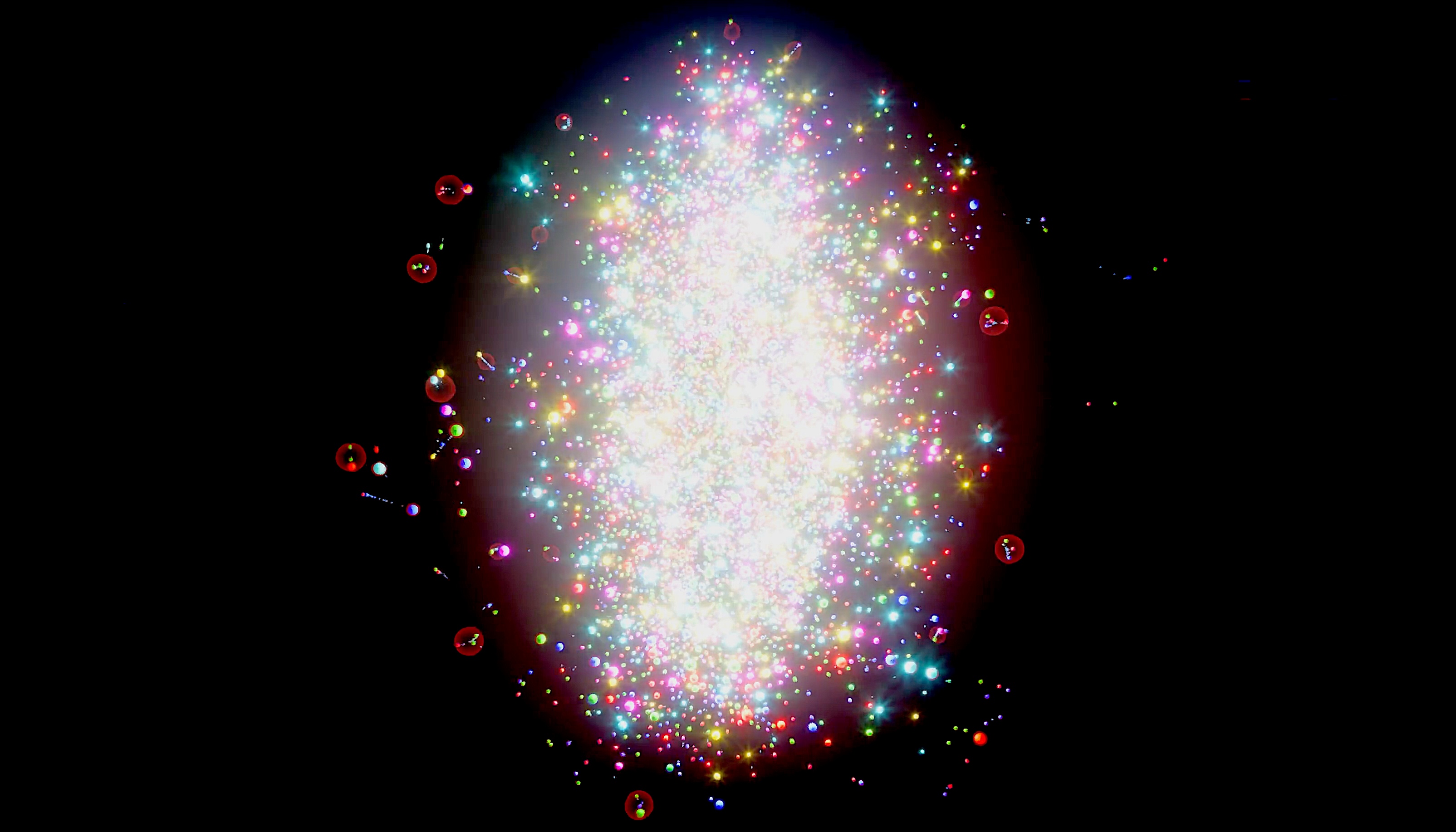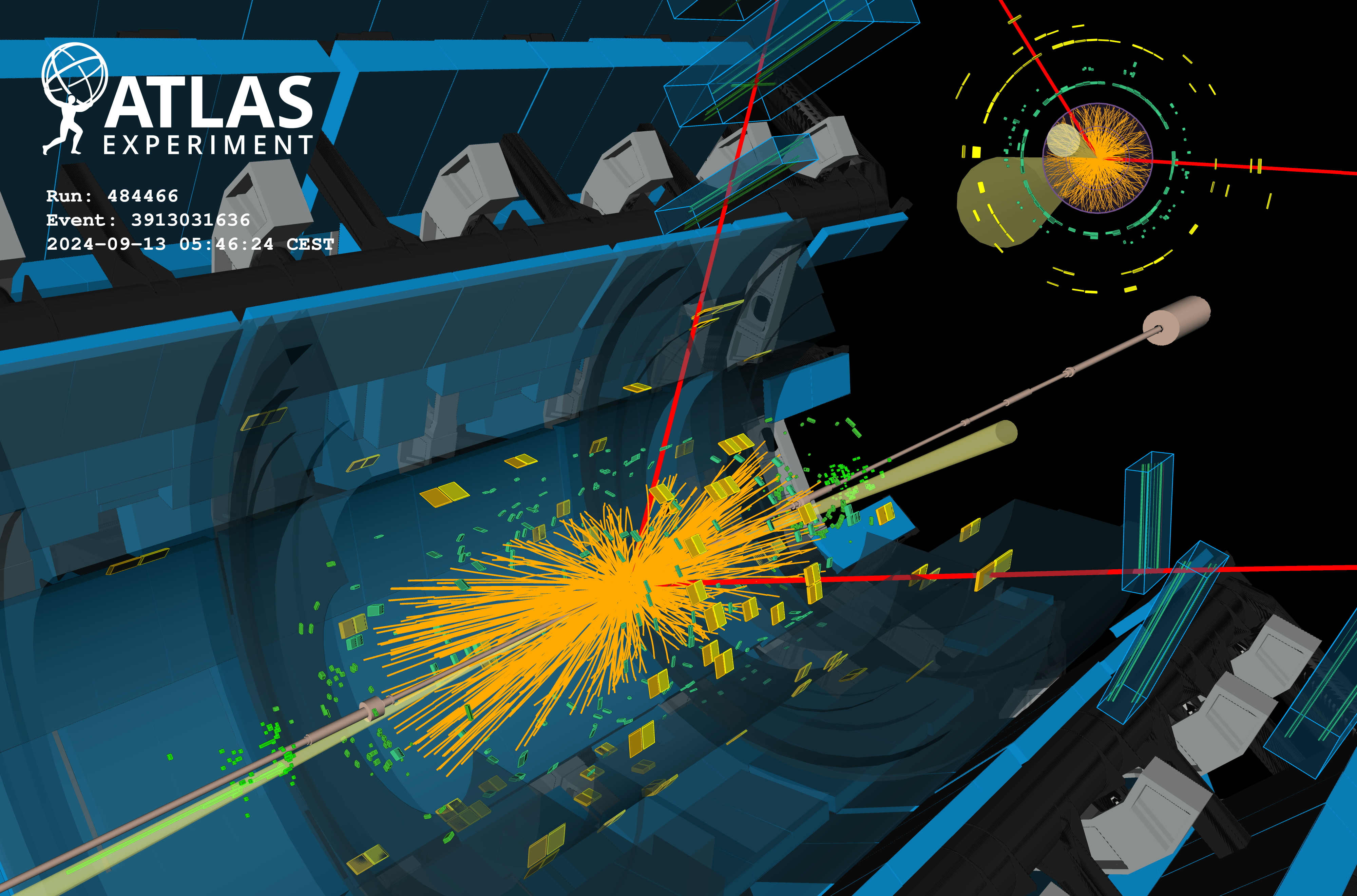ATLAS measures the Higgs boson at 13.6 TeV
24 May 2023 | By
On 4 July 2022, 10 years to the day after the discovery of the Higgs boson, the ATLAS Collaboration at CERN released its most precise and complete set of measurements of Higgs boson properties. This result, performed using data collected during the Large Hadron Collider (LHC)’s second experimental run, provided an unprecedented level of detail in the study of Higgs boson interactions with other particles. The very next day, the LHC restarted operations for its third experimental run – this time at a record-breaking centre-of-mass energy of 13.6 TeV.

The ATLAS Collaboration has just released new measurements of the production rate (or cross section) of Higgs bosons at 13.6 TeV using data collected in the second half of 2022. The result discussed in this briefing combines measurements that exploit two of the very distinctive signatures that first enabled ATLAS to discover the Higgs boson back in 2012. They are the H → γγ channel, where the Higgs boson decays into two photons, and the H → ZZ* → 4l channel, where the Higgs boson decays into two Z bosons which in turn decay into four leptons (electrons or muons).
Though both decays are quite rare, the ATLAS detector was designed to identify and measure photons, electrons and muons with high efficiency and precision, allowing physicists to study the properties of the Higgs boson in great detail using the H → γγ and H → ZZ* → 4l channels. The first step is to measure the production rates of the Higgs boson within the coverage of the ATLAS detector, the so-called fiducial cross-sections. Such measurements have a double function: they are useful to understand the performance of the ATLAS detector and can be considered standard candles of the Standard Model of particle physics. The Higgs-boson signal is expected to show up as an excess over the background prediction, at around 125 GeV in the invariant mass distribution of its decay products. As shown in figures 1 and 2, the peak is observed in both the H → γγ and H → ZZ* → 4l decay channels.
ATLAS physicists are studying the properties of the Higgs boson at the record-breaking centre-of-mass energy of 13.6 TeV.

The fiducial cross-sections (σ) measured with the ATLAS detector in proton-proton collisions at a centre-of-mass energy of 13.6 TeV are σγγ = 76 ± 14 fb and σ4l = 2.80 ± 0.74 fb. These results are in good agreement with the Standard-Model predictions of 67.6 ± 3.7 fb and 3.67 ± 0.19 fb.
By assuming that the Higgs-boson decay rates are those predicted by the Standard Model, and that the fraction of H → γγ and H → ZZ* → 4l events that are observable by the ATLAS detector is as described by the Standard Model, ATLAS physicists were able to extrapolate the total cross-section of Higgs-boson production in proton-proton collisions. The results are 67 ± 12 pb and 46 ± 12 pb. These values are combined to yield a Higgs-boson total cross-section measurement at the world-record centre-of-mass energy of 13.6 TeV of 58.2 ± 8.7 pb, in excellent agreement with the Standard-Model prediction of 59.9 ± 2.6 pb, as shown in figure 3.
These results made it possible to test the performance of the ATLAS detector under the new data acquisition conditions of the LHC Run 3 and to study physics of the Higgs boson at an unprecedented energy of 13.6 TeV.

Learn more
- Measurement of the H → γγ and H → ZZ*→ 4l cross-sections in proton–proton collisions at 13.6 TeV with the ATLAS detector (ATLAS-CONF-2023-032)
- LHCP2023 presentation by Roberto Di Nardo: Higgs boson fiducial differential cross section measurements at ATLAS
- 10 years of discovery with the Higgs boson, ATLAS Press Statement, July 2022
- ATLAS Experiment records “first physics” at new high-energy frontier, ATLAS Press Statement, July 2022
- Summary of new ATLAS results from LHCP 2023, ATLAS News, May 2023




